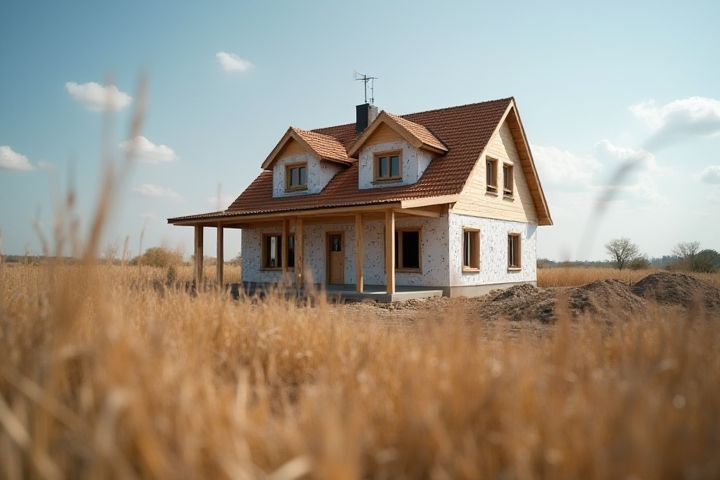
Choosing a location for your new house involves several crucial factors. Assess local amenities such as schools, hospitals, shopping centers, and recreational facilities that affect daily convenience and quality of life. The neighborhood's safety ratings and community vibe can significantly influence your family's comfort and social interactions. Access to public transport options and major roadways ensures ease of commuting, while proximity to nature or parks can enhance your living experience. Consider future developmental plans in the area to ensure your investment remains valuable over time.
Where To Build A New House
Zoning laws
When considering where to build a new house, understanding zoning laws is crucial. These regulations can dictate the type of structures permitted in specific areas, including residential, commercial, or industrial classifications. For instance, many urban areas have residential zones that typically permit single-family homes or duplexes, while certain districts may only allow multi-family units. Researching local zoning ordinances online or consulting with your local planning department can provide you with the specific criteria you need to ensure compliance and optimize your site selection.
Soil stability
Assessing soil stability is crucial when selecting a location for your new house. Areas with clay-rich soil may expand and contract, causing structural issues, while sandy soils often provide excellent drainage and stability. Conducting a soil test can reveal pH levels, organic matter content, and compaction, which all impact stability. It's advisable to avoid building on steep slopes or near bodies of water to minimize the risk of erosion and flooding, ensuring a safer foundation for your home.
Flood risk
When selecting a location for your new house, consider areas with low flood risk, typically defined by elevation and surrounding geography. According to the Federal Emergency Management Agency (FEMA), regions classified as Zone X indicate minimal flood risk, while Zones A and V present a higher likelihood of flooding. Research local flood maps, which can provide valuable insights into historical flood data and drainage patterns. It's also beneficial to assess the proximity to bodies of water, as homes situated more than 500 feet away from rivers or coastal areas generally experience less risk.
Accessibility
When selecting a location for your new home, prioritize areas that offer excellent accessibility to essential amenities. Look for neighborhoods with proximity to public transportation options, such as bus stops and train stations, which facilitate easy commuting for you and your visitors. Ensure that local infrastructure includes wheelchair ramps, accessible sidewalks, and driveways, enhancing convenience for individuals with mobility challenges. Consider the surrounding community's proximity to healthcare facilities, grocery stores, and schools to enrich your everyday life while maintaining ease of access.
Utility services
When selecting a location to build your new house, prioritize areas with accessible utility services, such as water, electricity, and sewage systems. Research local infrastructure developments, as regions with recent growth often boast modern utilities and reliable service. Consider proximity to essential services like internet providers, which can enhance your daily life through high-speed connectivity. Ensuring your chosen site has adequate access to emergency services and transportation lines can further streamline your living experience.
Property taxes
When selecting a location for your new house, it's essential to consider property tax rates, which can vary significantly by region. For example, states like Alabama and Louisiana boast some of the lowest average property tax rates, often below 1% of a property's assessed value, while New Jersey and Illinois typically have much higher rates, often exceeding 2%. Local government policies can impact these taxes, so researching specific municipalities can reveal even greater differences. Ultimately, a thorough analysis of both current and projected tax rates can help you make an informed decision that suits your financial situation.
Environmental impact
When selecting a location for your new house, consider areas that promote sustainability, such as sites with easy access to public transportation and local amenities, reducing reliance on cars. Investigate land that is not in a flood zone or other environmentally sensitive areas to mitigate potential ecological damage. Incorporating green building practices, such as energy-efficient appliances and solar panels, can further lessen your environmental footprint. Additionally, choosing native landscaping can help conserve water and support local wildlife, enhancing biodiversity in your surroundings.
Neighborhood safety
When selecting a location for your new house, prioritize neighborhoods with low crime rates, which often correlate with a higher sense of safety and community. Research crime statistics from local police departments or online databases to identify areas with a significant decrease in incidents over the past few years. Look for neighborhoods that have active community watch programs or neighborhood associations, as they tend to foster a safe environment. Furthermore, consider access to essential services, such as well-lit streets and nearby emergency services, which can enhance overall safety in your chosen area.
School district quality
When considering where to build a new house, prioritizing the quality of school districts is essential for both your family's educational success and future property value. Research shows that homes located in high-performing school districts often sell for 10-20% more than similar properties in lower-ranked areas. States like Massachusetts and New Jersey consistently rank highly for school system quality, with numerous districts receiving A or A+ ratings from GreatSchools. Investing in an area with a strong educational reputation can significantly enhance your child's learning environment and provide long-term financial benefits.
Future development plans
When considering where to build a new house, it's essential to research the future development plans of potential locations. Areas slated for infrastructure improvements, such as new schools, hospitals, and public transportation, often see increased property values and better living conditions. You may want to explore regions included in urban expansion initiatives or designated as growth corridors by local governments. Reviewing zoning regulations and community plans can provide insights into upcoming amenities and services that will enhance your investment.
